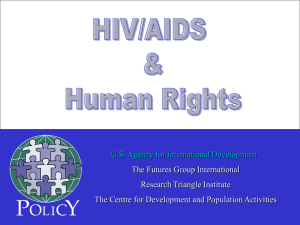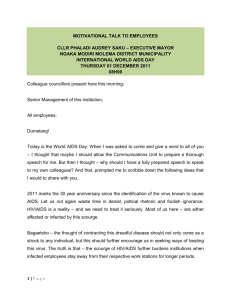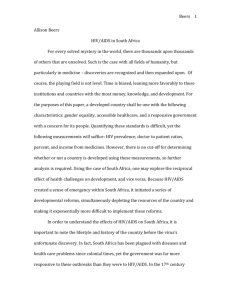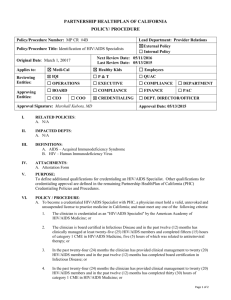PSCI 115F Final Essay
advertisement
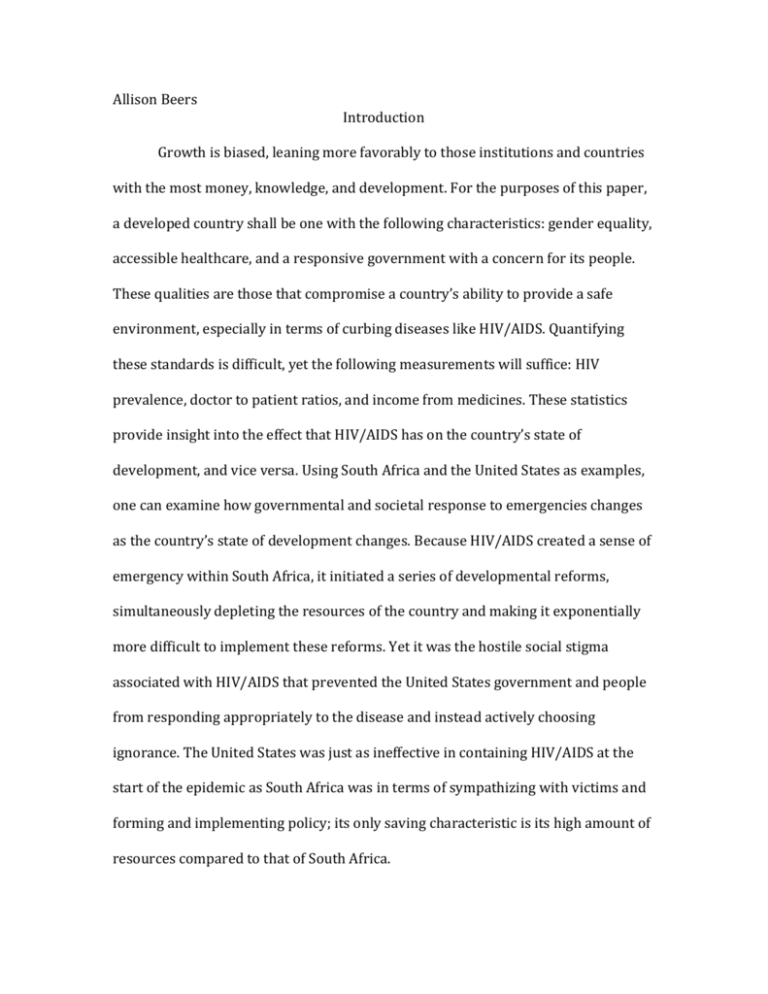
Allison Beers Introduction Growth is biased, leaning more favorably to those institutions and countries with the most money, knowledge, and development. For the purposes of this paper, a developed country shall be one with the following characteristics: gender equality, accessible healthcare, and a responsive government with a concern for its people. These qualities are those that compromise a country’s ability to provide a safe environment, especially in terms of curbing diseases like HIV/AIDS. Quantifying these standards is difficult, yet the following measurements will suffice: HIV prevalence, doctor to patient ratios, and income from medicines. These statistics provide insight into the effect that HIV/AIDS has on the country’s state of development, and vice versa. Using South Africa and the United States as examples, one can examine how governmental and societal response to emergencies changes as the country’s state of development changes. Because HIV/AIDS created a sense of emergency within South Africa, it initiated a series of developmental reforms, simultaneously depleting the resources of the country and making it exponentially more difficult to implement these reforms. Yet it was the hostile social stigma associated with HIV/AIDS that prevented the United States government and people from responding appropriately to the disease and instead actively choosing ignorance. The United States was just as ineffective in containing HIV/AIDS at the start of the epidemic as South Africa was in terms of sympathizing with victims and forming and implementing policy; its only saving characteristic is its high amount of resources compared to that of South Africa. Conclusion It can be said that HIV/AIDS has done more harm than good in terms of the lives it has taken, yet it catalyzed long-term policies that are on track to improve the quality of life compared to before HIV/AIDS. If only it did not take a crisis to necessitate progress in equality (in terms of gender, healthcare, etc.), governments worldwide would be far more responsible. Even though they are drastically different, the United States and South Africa handled the same crisis in a nearly identical way, until the resources and development of the United States overwhelmed the prevailing sense of prejudice and negligence towards HIV/AIDS. Extrapolating on this idea, it is most likely that if South Africa had the resources that the United States did, treating HIV/AIDS would be a much smaller problem, as the politics of the disease would fade into the background. Dr. James Mason, the Director of the CDC during the HIV/AIDS crisis, stated, “there are certain areas which, when the goals of science collide with moral and ethical judgment, science has to take a time out” (Francis 2012). Although this is a discouraging claim, especially from the head of one of the most important science departments in the world, it proved to be true. It is a testament to the prejudice of the society at the time that saving lives and preventing the spread of disease would be considered immoral simply because of the nature of the lives being saved. Choice, not ignorance, was the main factor at play in the HIV/AIDS crisis.




![Africa on the rise - Health[e]Foundation](http://s2.studylib.net/store/data/005761249_1-4e2609b64b2c374f99ff6e9dbe45edb8-300x300.png)


